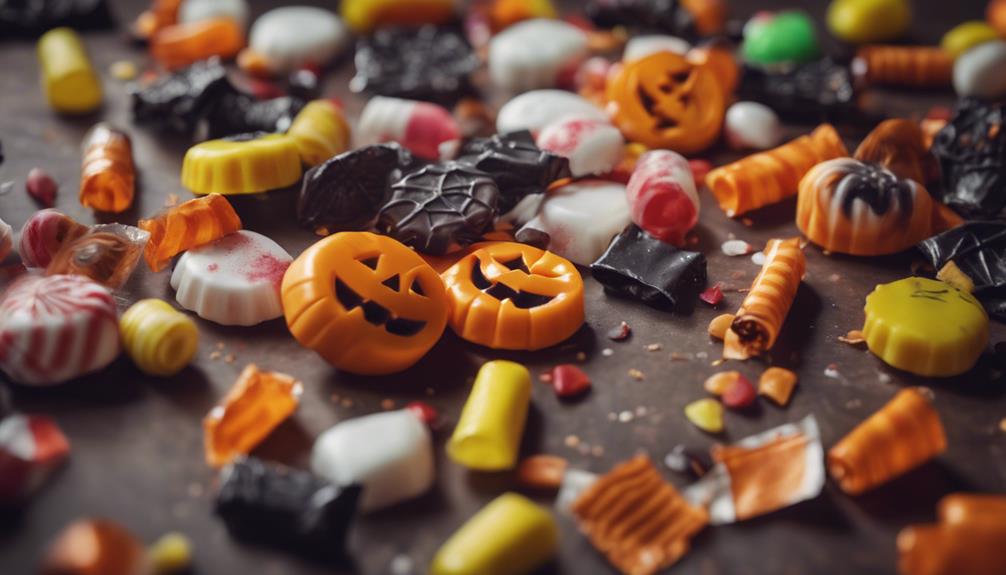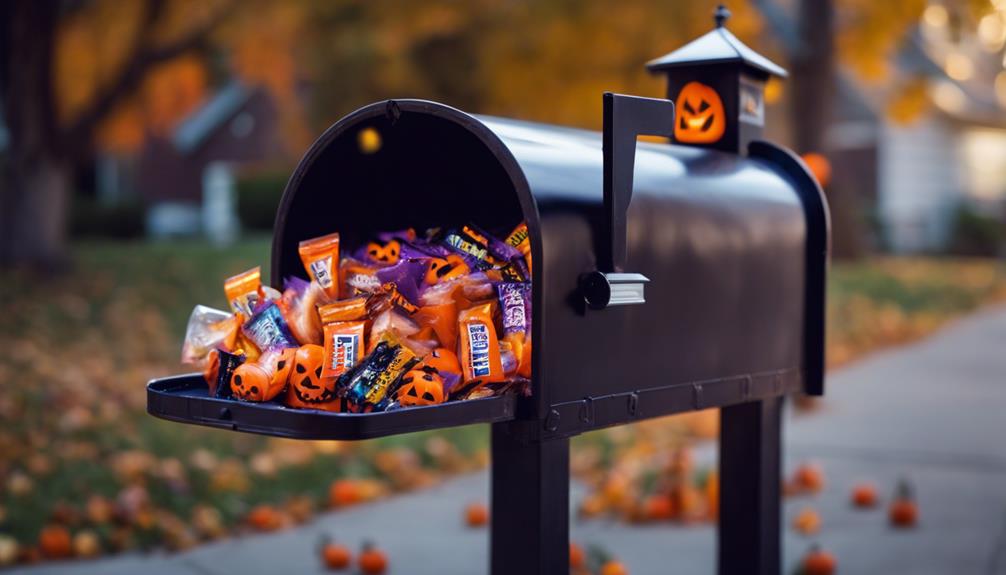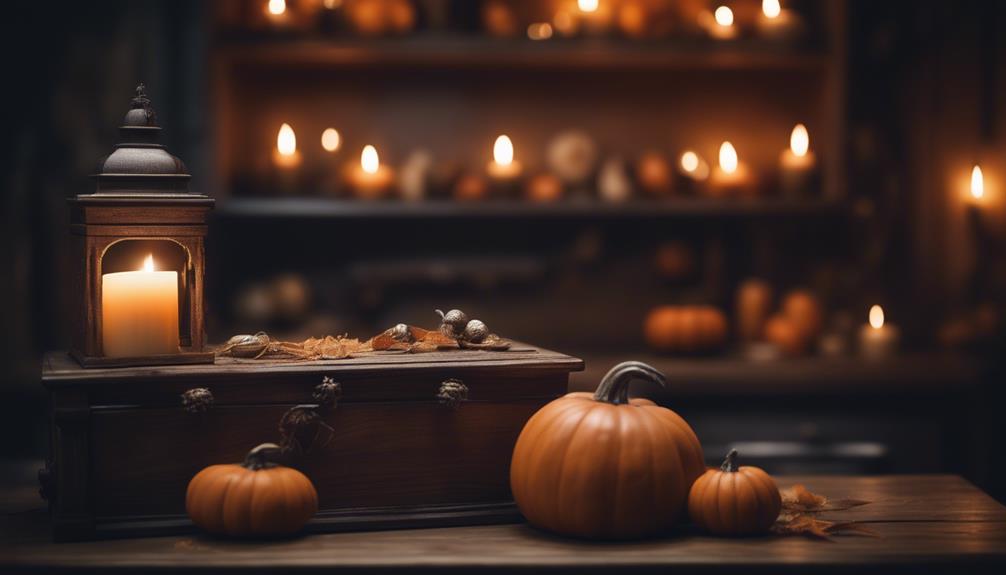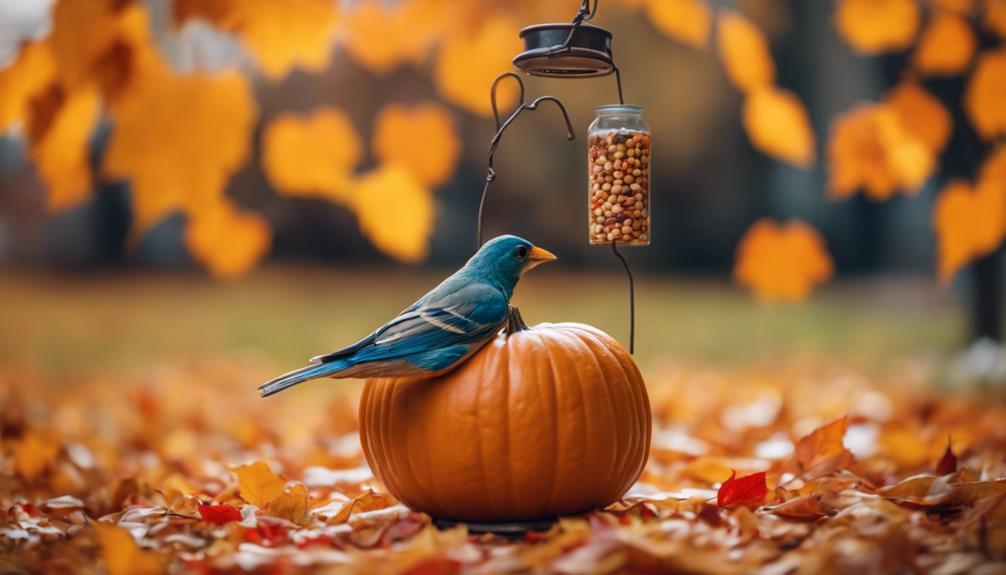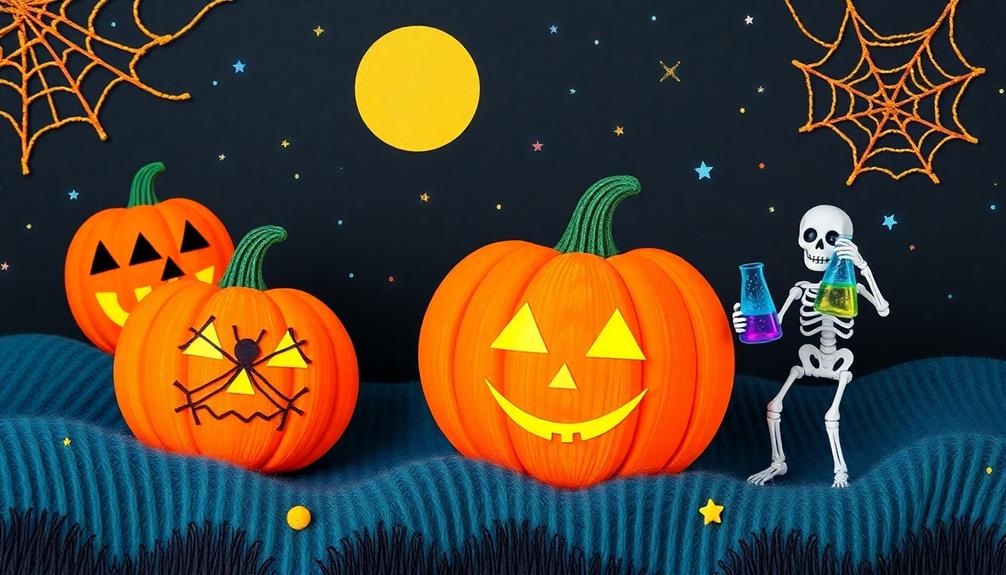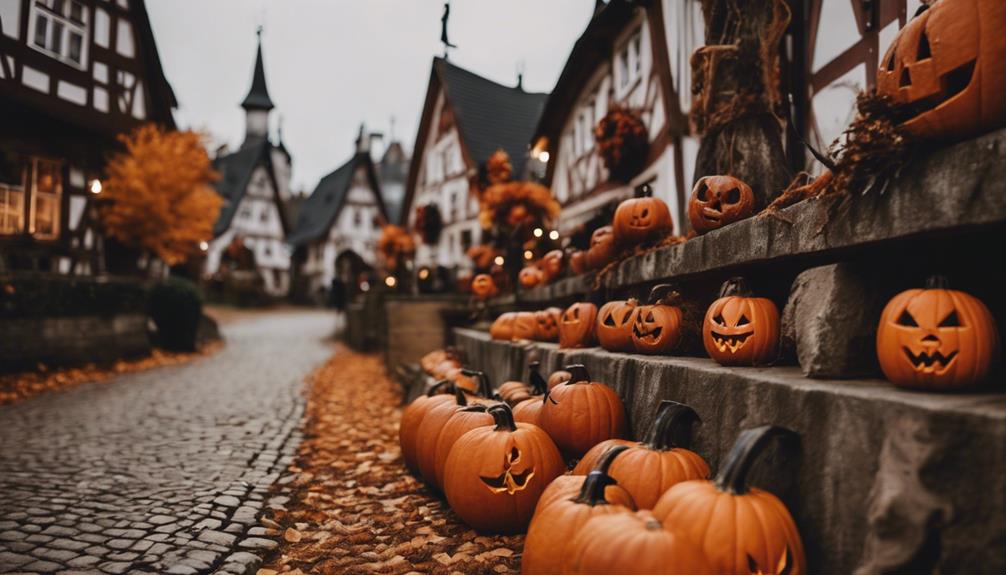Halloween candy does expire. Different candies have varying shelf lives: white chocolate lasts 8-10 months, dark chocolate up to 2 years, gummies 6-9 months, and hard candies about 1 year. Factors like humidity, heat, and light affect spoilage. For example, store hard candy in a cool, dry place away from moisture and heat sources. Always keep candy corn sealed. Consuming expired candy risks quality decline and potential health issues. Stay tuned to learn more about preserving your favorite treats!
Key Takeaways
- Halloween candy can expire due to quality decline from factors like humidity, heat, and light exposure.
- Different types of candy have varying shelf lives, ranging from 6 months to 2 years.
- Visual cues like white bloom on chocolate can indicate aging, but most expired candy is safe to eat.
- Proper storage in cool, dry places extends shelf life and maintains candy freshness.
- Use judgment based on taste and smell; discard candy with off-flavors, odors, or signs of spoilage.
Halloween Candy Shelf Life
When assessing the shelf life of Halloween candy, it's important to note the varying expiration periods for different types of candies.
White chocolate, often found in treats like ghost-shaped candies, typically lasts 8-10 months.
Dark chocolate, a popular choice for Halloween sweets, can endure up to 2 years before expiring.
Hard candies, such as lollipops or candy corn, remain good for about 1 year.
Gummies, a favorite among many trick-or-treaters, usually last between 6-9 months before spoiling.
Soft candies like caramels and jelly beans have a shelf life of 6-9 months once opened, but can last up to 1 year if left unopened.
Proper storage, especially for unopened packages, plays a significant role in extending the shelf life of Halloween candies.
Factors Affecting Candy Spoilage
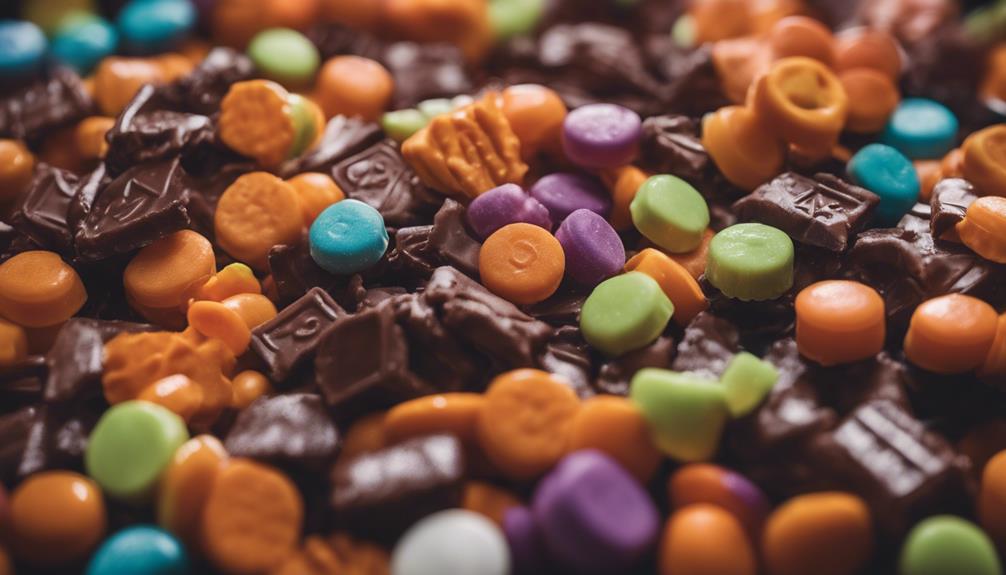
Factors such as moisture, light, heat, and fat content can contribute to the spoilage of candies. Here are some key points to think about when pondering candy spoilage:
- Humidity can cause sugar-based candies to dry out, affecting their texture and taste.
- Excessive heat can lead to fat bloom formation in chocolate, resulting in a white, powdery layer on the surface.
- Light exposure can cause colors to fade and flavors to deteriorate, impacting the overall quality of the candies.
- Essential storage is vital in extending the shelf life of candies; store them in a pantry away from light and moisture for ideal preservation.
- Candy corn, when sealed properly, can last up to 9 months, making it important to pay attention to storage conditions to prevent spoilage.
Understanding these factors can help you keep your favorite candies fresh and enjoyable for longer periods.
Chocolate Expiration Period
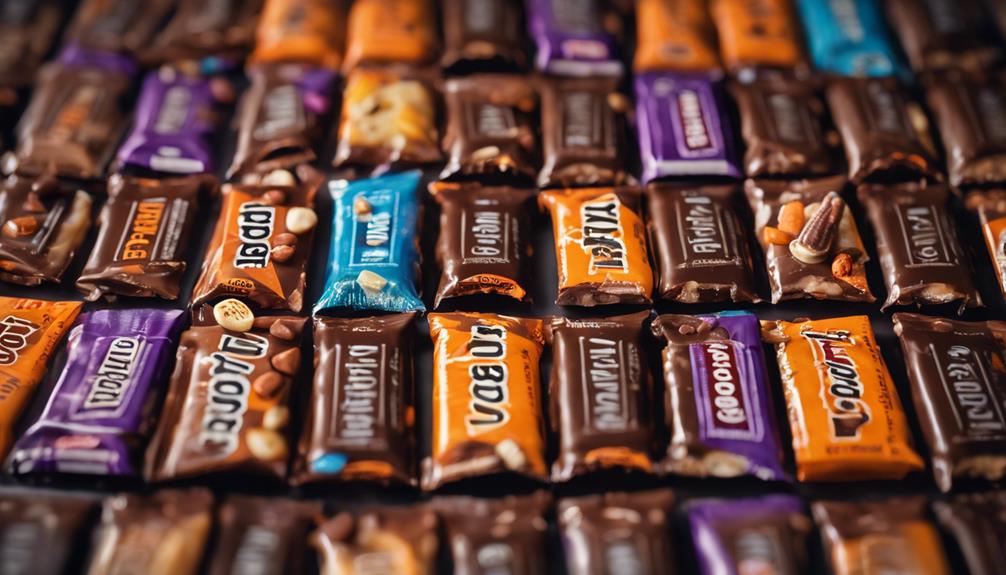
Understanding the expiration period of chocolates is essential for enjoying them at their best quality. Different types of chocolate have varying shelf lives. Dark chocolate tends to last longer, up to 2 years if stored properly in a cool, dark place. On the other hand, milk and white chocolate have a shelf life of 8-10 months. When stored at room temperature, chocolates can normally oxidize, leading to a white bloom on the surface, which is not mold but a sign of aging. Although the quality and taste may deteriorate over time, expired chocolate is generally safe to eat. Here is a comparison of the expiration periods for different types of chocolate:
| Type of Chocolate | Shelf Life |
|---|---|
| Dark | Up to 2 years |
| Milk | 8-10 months |
| White | 8-10 months |
Hard Candy Preservation
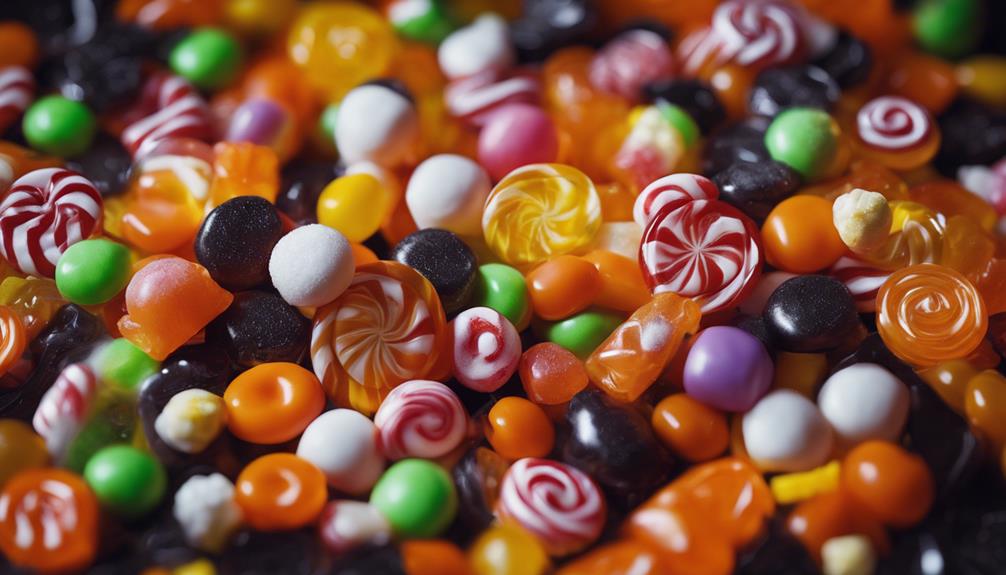
To preserve hard candy, store it in a cool, dry place away from moisture. Check for any signs of moisture or stickiness that indicate the candy may have gone bad.
Avoid exposing hard candies to extreme temperatures to maintain their quality and taste for longer periods.
Store Hard Candy
When storing hard candy, make sure you keep them in airtight containers to maintain their freshness and prevent spoilage due to exposure to moisture. Here are some tips to help you store hard candy properly:
- Store hard candy at room temperature to preserve its texture and flavor.
- Keep hard candies away from moisture to prevent them from becoming sticky or developing mold.
- Use airtight containers to protect hard candies from temperature fluctuations that can affect their quality.
- Avoid storing hard candies near heat sources as high temperatures can cause them to melt or lose their shape.
- Keep hard candies away from light sources to prevent color fading and maintain their appearance.
Check for Moisture
Inspect hard candies for any signs of moisture to guarantee they remain fresh and maintain their quality. Moisture exposure can lead to spoilage, causing hard candies to stick together and lose their desired texture.
To prevent this, store hard candies in a cool, dry place away from humid environments. It's advisable to seal them in airtight containers to maintain their freshness and prevent moisture absorption.
Checking for any signs of moisture on the hard candies is important as it serves as an indicator of potential spoilage. By being vigilant and ensuring the candies are free from moisture, you can prolong their shelf life and enjoy them at their best quality.
Avoid Extreme Temperatures
Keep hard candy away from extreme temperatures to maintain its texture and flavor. Storing hard candy properly is important for preserving its shelf life. Here are some tips to help you avoid extreme temperatures and keep your hard candy in top condition:
- Moisture Absorption: Extreme temperatures can cause hard candy to absorb moisture, leading to a sticky texture.
- Heat Effects: Exposure to high heat can make hard candy sticky and lose its original shape, affecting its flavor.
- Freezing Risks: Avoid freezing hard candy as it can cause it to crack or shatter due to temperature changes.
- Proper Storage: Store hard candy in a cool, dry place to maintain its texture and flavor over time.
- Spoilage Prevention: Keep hard candy away from direct sunlight and high humidity to prevent spoilage and preserve its quality.
Marshmallow Shelf Life
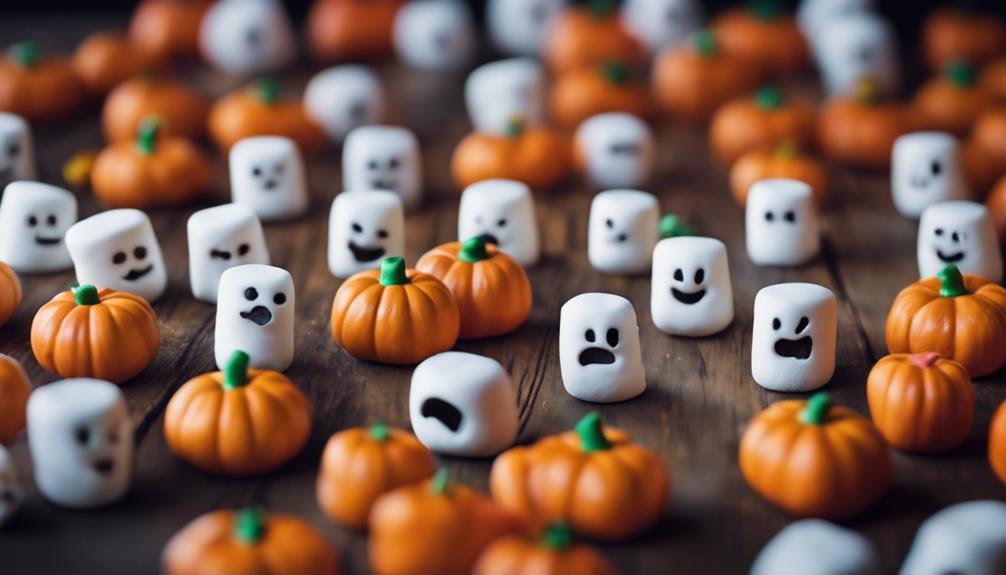
Proper storage is crucial in preserving the quality and freshness of marshmallows, which typically have a shelf life of about 6-8 months. To guarantee your marshmallows stay fluffy and delicious, store them in a cool, dry place away from heat and light. If the marshmallows are opened, transferring them to an airtight container can help prolong their shelf life to about 2 months. Moisture and humidity are marshmallows' enemies, as they can cause the marshmallows to become sticky and lose their texture.
If you find yourself with more marshmallows than you can consume within the recommended time frame, freezing them is an option. While freezing can extend their shelf life, be aware that the texture of the marshmallows may change slightly when thawed. For the best results, seal the marshmallows tightly in a freezer-safe bag or container. Remember, proper storage is key to enjoying your marshmallows at their best!
Caramel and Nougat Longevity
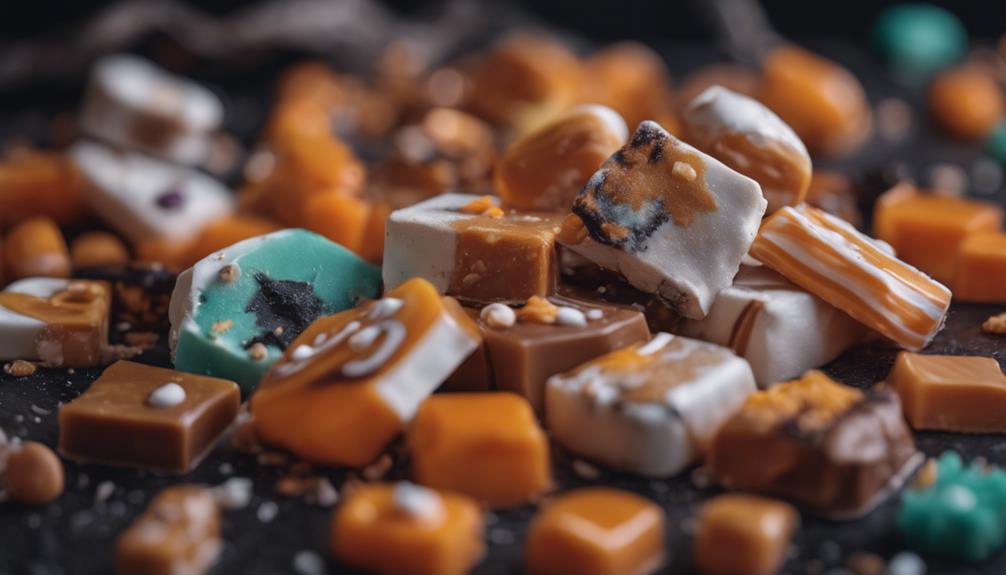
Storing caramel and nougat candies correctly at room temperature can extend their longevity to 6-12 months. Proper storage away from heat and light is important to maintain the quality of these treats.
Here are some essential tips to help you maximize the shelf life of your caramel and nougat candies:
- Keep them in a cool, dry place to prevent premature expiration.
- Watch out for any off-odors that could indicate spoilage.
- Check for changes in texture, as this can also signal that the candies are no longer at their best.
- Opened caramel and nougat candies typically last 6-9 months before the quality may start to decline.
- Unopened packages can last up to a year, but always be vigilant for signs of spoilage to make sure they're safe to eat.
Candy Corn Storage Recommendations

For best preservation of candy corn, make sure it is stored sealed in a cool, dry place. Proper storage plays an important role in extending the shelf life of candy corn and maintaining its quality. Here are some essential storage recommendations to make certain your candy corn stays fresh:
| Storage Recommendation | Details | Importance |
|---|---|---|
| Keep candy corn sealed | Prevents exposure to moisture | Extends shelf life |
| Store in a cool place | Avoids heat and light exposure | Maintains quality and freshness |
| Choose a dry place | Prevents spoilage | Preserves flavor and texture |
Risks of Consuming Expired Candy
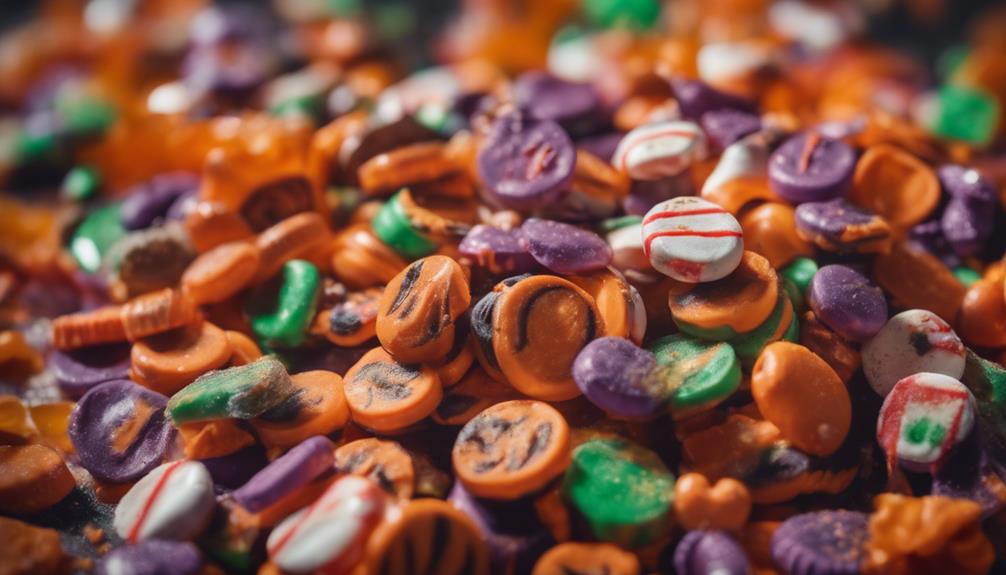
Avoid consuming expired candy as its quality and texture may have deteriorated over time, impacting your overall enjoyment. When it comes to food safety, expired candy is generally safe to eat, but there are risks associated with consuming it past its shelf life. Here are some key points to keep in mind:
- Quality decline: Expired candy may suffer from a decline in quality, affecting its taste and texture.
- Signs of aging: Look out for visual cues like white bloom on chocolate, which are harmless indicators of aging.
- Off-flavors and odors: Pay attention to any off-flavors or odors that may develop in expired candy, indicating spoilage.
- Safe to eat: While most expired candy is safe to consume, it's important to use your judgment based on taste and smell.
- Spoiled candy: If you notice fuzzy growth or any other signs of spoilage, it's best to discard the expired candy to avoid any potential health risks.
Frequently Asked Questions
How Long Does Halloween Candy Last For?
When it comes to Halloween candy, the duration it stays fresh varies.
Soft chocolates like milk and white chocolate typically last 8-10 months, while dark chocolate can endure up to 2 years.
Hard candies like lollipops maintain their quality for about a year, and gummies have a shelf life of 6-9 months.
Soft candies like caramel and jelly beans can last 6-9 months once opened and up to 1 year if unopened.
Can You Eat Candy 2 Years Out of Date?
You shouldn't eat candy that's two years past its expiration date. While some candies can last a long time, they're not immortal.
Think of it like a fading memory—eventually, it loses its vibrancy. After two years, the taste and texture may not be enjoyable, and it's better to be safe than sorry.
Check the expiration dates on your candy and indulge in treats that are fresh and delicious.
How Long After Halloween Can You Eat Candy?
After Halloween, you can enjoy your candy for 6-9 months. Keep an eye on softer candies as they may not last as long. Different candies have varying expiration dates, ranging from 6 months to 2 years.
While quality might decline over time, most candies stay good for a while. If you have leftovers, check out recipes to make tasty treats using your Halloween candy stash!
How to Know if Candy Is Expired?
To know if candy is expired, trust your senses like a detective on a case. Look for changes in taste, texture, or appearance. If it smells weird, tastes off, or has mold, it's time to say goodbye.
Conclusion
So, remember, when it comes to Halloween candy, it's crucial to check the expiration dates and store them properly to guarantee they stay fresh.
While some candies may last longer than others, it's better to be safe than sorry. Nobody wants to be stuck with stale sweets when the trick-or-treaters come knocking!
Make sure to enjoy your treats before they expire and have a spooktacular Halloween!
